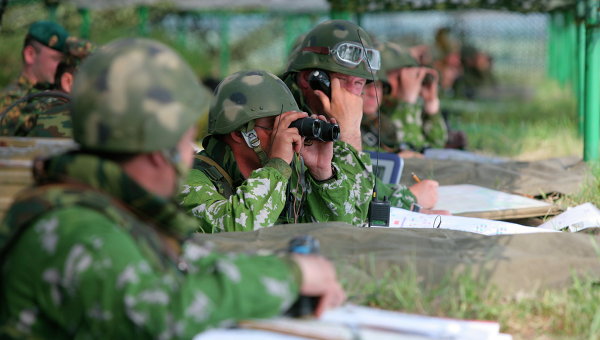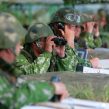
Russia’s Five-Battalion-Strong Army
Publication: Eurasia Daily Monitor Volume: 8 Issue: 14
By:

Russian military reform, initiated in the fall of 2008 after the short war with Georgia in August of the same year, has reached a critical junction: the old military machine has been dismantled, while a new one is struggling to emerge. Today, Russia is in a precarious situation, when as a result of a combination of several factors its effective offensive military capability is at a historically low ebb. While official pronouncements continue to be traditionally optimistic that the reform is proceeding according to plan, alarm signals are increasing from the expert community.
A new book of reports by experts was released this week in Moscow by the Center of Analysis of Strategies and Technologies (CAST) – a well-known think tank closely connected to the Russian authorities: “Novaya Armiya Rossiya” (The New Russian Army) (https://periscope2.ru/pdf/new_russian_army_sm.pdf). The book lists a number of technical, strategic and personnel problems that bedevil the present Russian armed forces: including a lack of modern weapons, vague military doctrine that does not distinguish precisely what threats Russia faces and the military means that must be developed to counter them. Russia is an isolated power with no significant allies, while the Collective Security Treaty Organization (CSTO), comprising Russia, Belarus, Armenia, Kyrgyzstan, Tajikistan, Kazakhstan and Uzbekistan, depends on Russia’s limited defense resources. According to CAST experts, CSTO allies are weak and disloyal and unprepared or able to support Russia politically or militarily, while these countries require constant commitment and investment. Additionally, an acute manning crisis has diminished the combat readiness of the so called “permanent readiness brigades.”
Officially, the fall draft of 2010 that ended on December 31, 2010, was declared a success by the defense ministry with 280,000 draftees called up as planned (RIA Novosti, December 31). But this does not seem to be entirely true and the growing under manning of units is being reported (EDM, January 18). The staff of the interior troops of the interior ministry has complained that they requested 27,000 new recruits in the fall of 2010, but the defense ministry (the General Staff) reduced the request to 20,000 and actually provided only 18,500. The Deputy Chief of the Interior Troops, Lieutenant-General Sergei Topchiy, also complained: “A drastically increased number of draftees with a criminal record have been arriving to fill the ranks in the fall of 2010 and this is causing concern.” The defense ministry today is calling up 18-year olds born in the early 1990’s, when the birthrate of males plummeted in Russia from 1.5 million in the mid 1980’s to under 800,000 (Interfax, January 3). The interior troops’ brigades and divisions are used to reinforce the police in case of mass rioting and to confront Islamist rebels in the North Caucasus. Drafting criminals into the interior and defense ministry units has promoted criminal hazing in the barracks and reduced combat readiness.
According to “The New Russian Army” authors, the main strategic mistake was the transition to one year conscript service in 2008 from the previous two year term. The idea of the reform was to man combat units mostly with contract soldiers or kontraktniki, while conscripts form a trained mobilization reserve are also used as a pool for recruiting additional kontraktniki. From 2005 to 2007 more than 50 percent of the defense budged was reportedly spent on the federal program to form a contract armed force, which was later declared to be a failure: the number of recruited kontraktniki was inadequate and their quality – dubious. In 2009 and 2010 contract units were replaced by a predominantly conscript force – mostly to save money.
Today, officially the Russian armed forces have 85 brigades, but according to the “New Russian Army” authors their combat readiness is dismal. Sergeants and specialists are 3-months trained conscripts. Unit combat readiness fluctuates twice a year as during the spring and fall drafts trained soldiers are discharged after one year service and units are left with six-month serving badly-trained conscripts and fresh recruits with no training. These brigades are officially fully combat ready, but in reality they may send into combat one or two battalion tactical groups of six-month-trained conscripts. Another problem is that soldiers with six-month service experience may be sent into combat in the winter after training only in summer conditions and vice versa.
The need to draft over 500,000 conscripts per year to fill the ranks means that young men with health problems are called up as well as criminals who end up “criminalizing the units.” The only region of the Russian Federation where in the 1990’s the birthrate was comparatively high and continues to be high today are the Muslim republics of the North Caucasus. The “New Russian Army” authors express fear that the resulting growth in the numbers of Muslim conscripts in the Russian armed forces is already causing ethnic tension and may lead to overall disloyalty of units that could lose their Russian-Slavic nature.
In August 2008, the elite airborne forces (Vozdushno Desantnye Voiska –VDV) spearheaded the forces that successfully invaded Georgia – eight full-strength VDV infantry battalions, one artillery regiment and two companies of VDV spetsnaz – all predominately kontraktniki. Only the Tula 106th guards VDV division that was in 2008 predominantly conscript did not take part in the invasion. Today, the 35,000-strong VDV predominantly consists of conscripts: 4,000 officers (400 – occupy sergeant’s positions), 7,000 kontraktniki and 24,000 conscripts. The overall number of kontraktniki in the VDV is 20 percent, but they are spread out unevenly – each VDV major unit (the 7th, 76th, 98th, 106th divisions and the 31st brigade) has a special “immediate reaction” battalion with 70 percent kontraktniki – mainly veterans with combat experience (https://periscope2.ru/pdf/new_russian_army_sm.pdf).
These five VDV “immediate reaction” battalions are in effect Russia’s present expeditionary-capable combat force. According to the “New Russian Army” authors, if the Russian military becomes involved in an armed conflict that requires more than five battalions, it will be in trouble. It does not make much sense to spend billions of dollars to rearm the present Russian military if its manning crisis makes it a low-quality force. Conscript service must be increased, or the forming of contract all-volunteer units resumed, or both. But longer draft service would be unpopular and may create political problems, while additional kontraktniki require additional funding that may not be forthcoming. The present state of defense reform limbo may continue.




